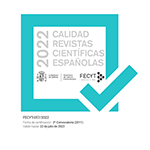New threats for a protected plant: the need to review and update recovery plans of endangered species.
Abstract
Helianthemum polygonoides is a perennial halophyte identified in 1987 in the Saltmarsh of Cordovilla (Albacete, SE Spain). In 2004 its distribution area was approximately 16 hectares, and its population was estimated at around 185000 adult individuals. Thus, this species is considered a local endemism due to its restricted distribution area, being catalogued as a "Critically Endangered" (CR). The main goal of this study is to review the current situation of the endemism, updating its distribution area and current threats and, consequently, establishing up-to-date conservation guidelines. A marked increment in the H. polygonoides population have been found (381909 individuals were estimated in 2022 census). We located new populations of H. polygonides, increasing its core distribution area and revealing the consolidation of proposed protection measures. In this context, our results have confirmed the direct relationship between the population size and the protection measures. According to the threat’s assessment, we have observed that most of the threats and impacts have been reduced (e.g., grazing) or stopped (e.g., accumulation of debris). However, we have found new threats (e.g., rabbit proliferation, wild boar damages, and fires), emphasising the need to review and update the Recovery Plan of H. polygonoides. In fact, we want to be pointed out that the mentioned threats are in constant change. We suggest the inclusion of new guidelines to control the new-found threats and provide eight new conservation guidelines to improve the conservation status of the current populations of H. polygonoides.
Downloads
Article download
License
Mediterranean Botany is an open access journal to promote global exchange knowledge. It facilitates unrestricted access to its contents from the moment of publication in its electronic edition. The originals published are property of the Universidad Complutense and it is mandatory to cite such source in case of total or partial reproduction. All contents are distributed under a Creative Commons License 4.0 (CC BY 4.0). This circumstance must be expressly stated in this way when necessary. You can check the informative version and legal text of the license.














